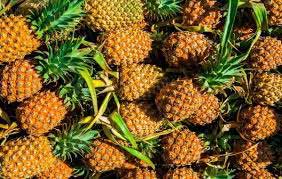Tripura
Tripura, state of India. It is located in the northeastern part of the subcontinent. It is bordered to the north, west, and south by Bangladesh, to the east by the state of Mizoram, and to the northeast by the state of Assam. It is among the smallest of India’s states and is located in an isolated hilly region of the country, with various indigenous peoples—or tribes—accounting for a significant portion of the population. The capital is Agartala, near the Bangladesh border in the northwestern part of the state. Area 4,049 square miles (10,486 square km).
Tripura is predominantly rural. The highest densities of rural population are found in the state’s most fertile agricultural lands, located in the western plain and the Gumti, Dharmanagar, and Khowai valleys. Towns are concentrated on the western plain. The state capital of Agartala is the largest city major towns include Badharghat, Jogendranagar, and Dharmanagar.

History of Tripura
The history of Tripura includes two distinct periods—the largely legendary period described in the Rajamala, a chronicle of the supposed early maharajas (kings) of Tripura, and the period since the reign of the great king Dharma Manikya (reigned c. 1431–62). The Rajamala, written in Bengali verse, was compiled by the Brahmans in the court of Dharma Manikya. During his reign and that of his successor, Dhanya Manikya (reigned c. 1463–1515), Tripura suzerainty was extended over much of Bengal, Assam, and Myanmar (Burma) in a series of remarkable military conquests. It was not until the beginning of the 17th century that the Mughal empire extended its sovereignty over much of Tripura.
When the British East India Company obtained the diwani, or financial administration, of Bengal in 1765, the part of Tripura that had been under Mughal rule came under British control. From 1808 each successive ruler had to receive investiture from the British government. In 1905 Tripura was attached to the new province of Eastern Bengal and Assam and was known as Hill Tippera.
The last ruling maharaja of Tripura, Bir Bikram Kishore Manikya, ascended the throne in 1923, and before his death in 1947, he settled Tripura’s accession to the newly independent country of India. Tripura officially became part of India on Oct. 15, 1949; it was made a union territory on Sept. 1, 1956, and it became a state on Jan. 21, 1972.
In the 1980s there was considerable ethnic violence in Tripura, fueled largely by local demands for an independent tribal homeland. In 1988 tribal dissidents ceased hostilities and dropped demands for autonomy in return for increased participation in state government.
Key Sectors of Tripura
 fruits & horticultural
fruits & horticultural
The agro-climatic conditions in the state are favourable for growing various fruits and horticultural crops. Tripura’s pineapples and oranges are known for their unique flavour and organic nature.
 spices
spices
As per the 1st advance estimate of 2018-19, total fruit production in the state is 525.42 thousand MT, total vegetables production is 791.13 thousand MT, total plantation production is 40.13 thousand MT, total spices production is 30.22 thousand MT.
 natural gas reserves
natural gas reserves
Tripura has vast natural gas reserves. The gas is available in a non-associate form, with high methane content of about 97.0 per cent. Concessional gas-pricing and vast reserves offer potential for setting up industries in the sector. Natural Gas production in Tripura during 2017- 18 (up to March 2018) stood at 1,439 million cubic metres (mcm).
 pineapples
pineapples
An agri-export zone for pineapples is also being developed. The state also has potential in the meat processing sector. Tripura implemented the National Food Security Act, 2013, in September 2015 and became the first state to implement the act in the entire North East
 Tripura Tea
Tripura Tea
Tea grown in Tripura is known for its good blending qualities. Organic tea and green tea production have been undertaken by some of the tea estates in the state. Tea production is a growing industry in Tripura and provides a considerable scope for investment.